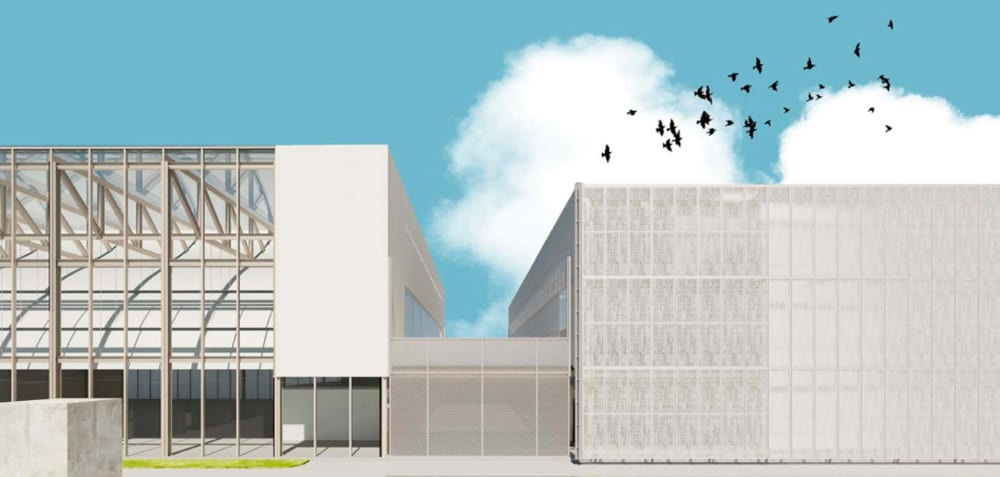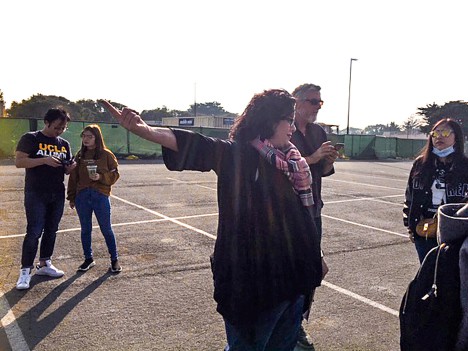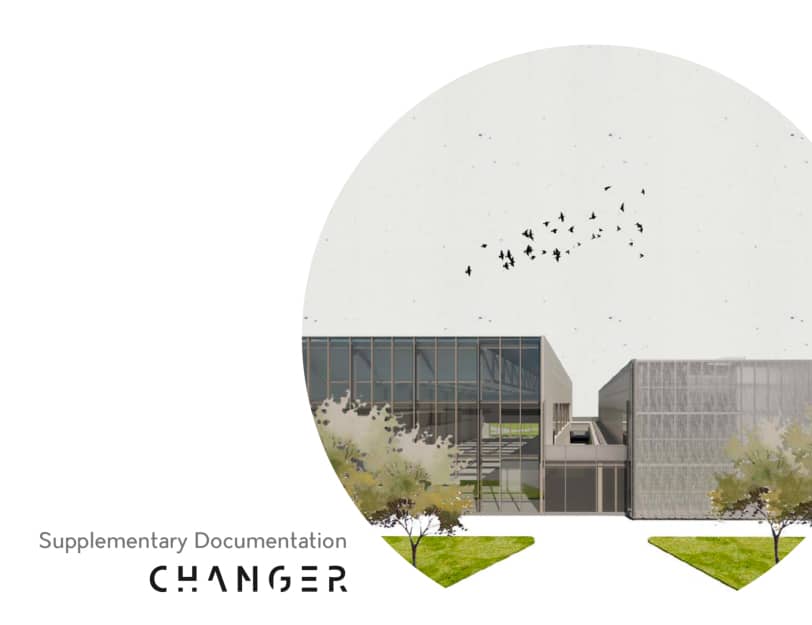Students, alumni, and instructors from Interior Architecture & Design, Landscape Architecture, and Graphic Design won the Net Zero competition in March. The Honors Prize for energy-efficient design in Architecture came with a $10,000 prize.

The competition was started eight years ago by the California Public Utility Commission. It promotes the commission’s goals for all new residential and commercial construction to use net-zero energy by 2020 and 2030. There are competition levels for both professionals and students.
To the Goal & Beyond
Led by Interior Architecture & Design graduate Alex Chuang, who now lives in Taiwan, the team, called “Crezlab” (pronounced “crazy lab”), assembled last fall to tackle this year’s competition prompt: a recreation center of two attached buildings on the California State University, Monterey Bay, campus.
“I wanted to help other students gain professional experience outside of a classroom that could help them get jobs and internships,” Chuang says. He added that the project brought participants “a sense of team responsibility, goal-seeking, mutual learning and thinking.”
Interdisciplinary & International Connections
After consulting with Academy instructors Stephanie Smith-Haenel and Michael Sammet, Chuang assembled the team. They separated into two groups: one focusing on architecture and the other on interior design and landscaping. Students worked through their winter breaks to complete their project.

The team also included students from Ming Chuan University and Chun Yuan Christian University, both in Taiwan. Academy Graphic Design graduate Linyi Guo acted as graphic design consultant for the team’s report.
Their design, titled “Changer,” had a unique inspiration—an ocean kayak. Chuang’s explanation: “The fluid dynamics and design features of the ocean kayak inform the approach to passive solar and the arrangement of solar panels on the building exterior. The idea that a kayaker achieves the most powerful and efficient stroke by minimizing excess body movement within the kayak informs efficient energy use.”
The design also incorporated such features as a fog catcher, solar panels and wind turbines, all to achieve a completely energy-efficient design. And of course the project used recyclable materials.
The jury praised the team for its energy analysis and use of sustainable strategies.
Roles & Benefits
Smith-Haenel and Sammet advised the team throughout the project, including a site visit to Monterey, Calif., in November 2018.
Sammet, who has taught sustainable design at the Academy for almost 10 years, says the experience is vital for students. “You can’t have [students] graduate without understanding how to reduce energy, water, materials and toxic chemicals in the environment and the environments they build… For 10 or 20 years, the field of architecture has been moving to this concept of net zero.”

Smith-Haenel says the team’s dedication was inspiring. “The students actually took ownership,” she says, operating beyond the classroom mindset of finding the right answer. “We did treat them, in this case, more as peers than as our students…I could see the growth. There’s a huge difference from where they were in the classroom and where they are now.”
Bella Chen, an Interior Architecture & Design student, says she “learned how to work with different people from different fields and respect their profession.”

Team members researched case studies and analysis together and divided up the work; Chen’s responsibility was the interior floor plan and furniture layout and selection.
For Chen, her studies at the Academy prepared her well: “The first time I dealt with sustainable design, I knew a lot of sustainable strategies and how to apply them to architecture.”
Steps Ahead
When the team learned they won, members were ecstatic. With this opportunity to build their creative portfolios in tow, some students are using the money to fund their professional exams. Chuang says the plan is to enter more competitions—“all in the efforts to support the professional goals of the students.”

For Smith-Haenel, the recognition affirms the Academy’s approach to cross-disciplinary collaboration. “The fact that there was so much Academy of Art at different levels speaks to the community that’s built while we’re all students,” she says.
“It lives on after you graduate and it trickles down. I always say that our alumni are everywhere—they really are.”
Article by Cristina Schreil of Academy Art U News